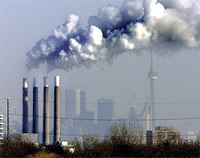^ I will try to keep my calm and be civil here.
How does pollution (seems to be something you are hinting) or internet freedom has anything to do with transit planning?
So your logic is: Since China is highly polluted and has internet censorship -> therefore their transit must be badly planned and there is absolutely nothing to learn from the entire country, from any of the hundreds of cities.
Shanghai's subway system basically copied from Tokyo (and London as well). Take a look at the map, there is striking similarities, the ring in particular.
Hate anything to do with China, fine. I mentioned Tokyo and NYC as well. Do you mind use some similar argument as too? They have much wider spacing too.
No matter how you dismiss it, both Shanghai and Tokyo are solid alpha+ cities since 2012, just one notch below NYC and London, while Toronto is considered an alpha city. You can hate Chinese cities all you want, the truth is, they have excellent transit.
http://www.lboro.com/gawc/world2012t.html
One thing I we can immediately learn from is each of their bus stops has the entire bus route with every single stop. On the other hand, our bus poles only say "BUS" and expect every rider to know where exactly this bus goes. I am sure you have never been to Shanghai and but if ever do, you will love the convenience of their transit (crowdedness not so much, but it has 2/3 of Canada's population). The cleanness, the technology, the stations, the condition of the trains are all world class. *they don't sell tokens or paper day pass BTW*
with regard to me going to Shanghai - I am a Canadian citizen. I can't simply just "move" to Shanghai, just like a Chinese citizen can't just move to Toronto. Just so you know, but it is too personal and off topic.










